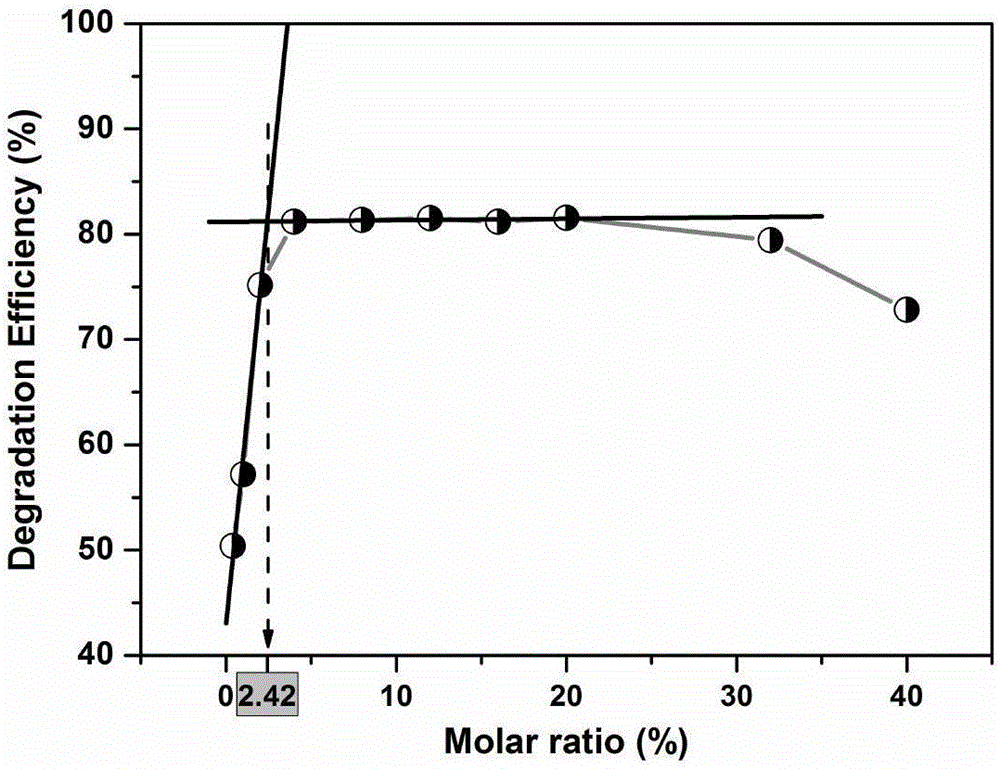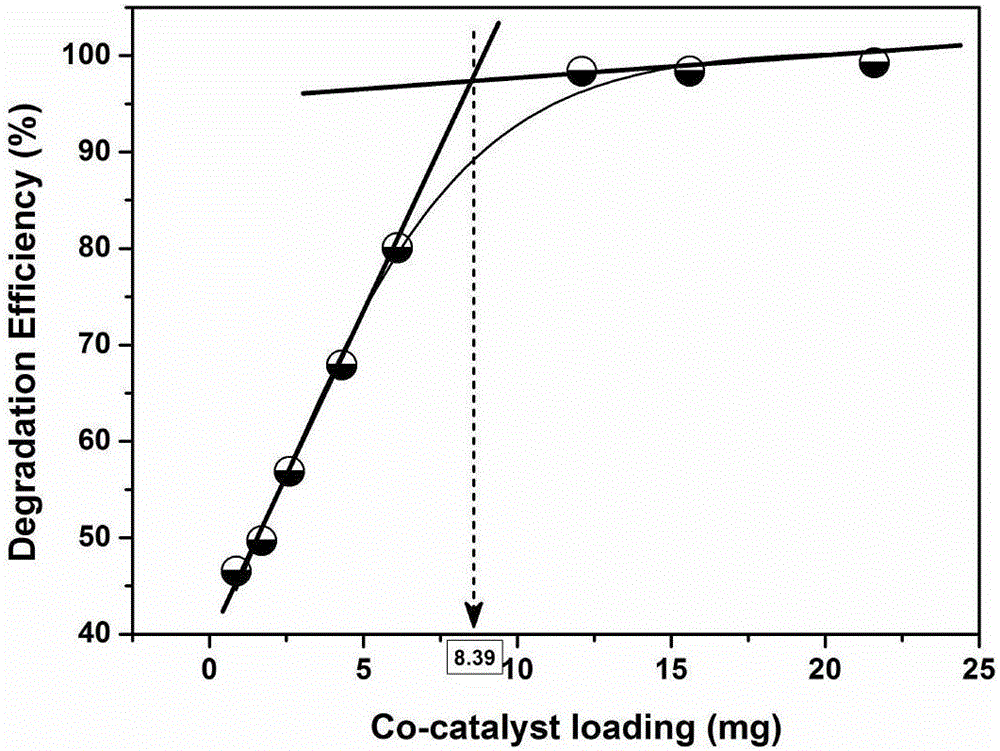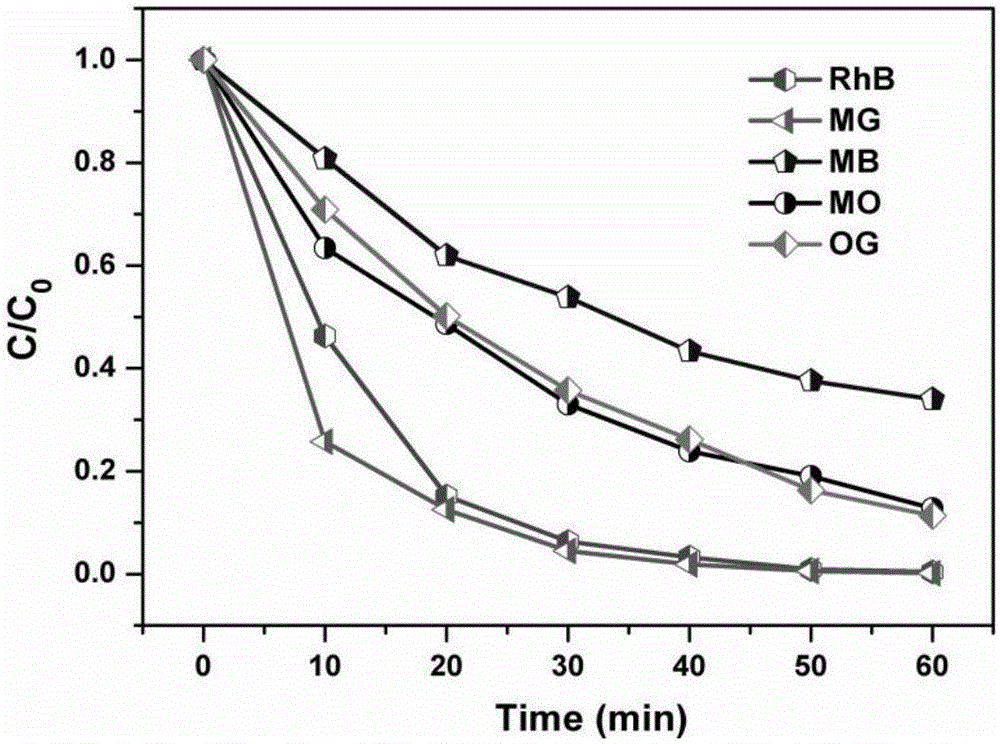Metal-organic framework material photosensitization titanium dioxide co-catalyst, and preparation method and application thereof
An organic framework, titanium dioxide technology, applied in the field of visible light catalysts, can solve the problems of reducing the interface energy between two phases, cumbersome steps, complicated methods, etc., and achieve the effects of good stability and durability, elimination of environmental pollution, and simple preparation method.
- Summary
- Abstract
- Description
- Claims
- Application Information
AI Technical Summary
Problems solved by technology
Method used
Image
Examples
Embodiment 1
[0045] The metal-organic framework material photosensitization titanium dioxide cocatalyst ADA-M / TiO of this embodiment 2 , by combining MOFs material ADA-M with TiO 2 It is obtained by mechanical grinding and mixing at a molar ratio of 0.4%, wherein ADA is 9,10-diacrylate anthracene, M is Cd(NO 3 ) 2 4H 2 O.
[0046] Among them, the synthesis of ADA-M used is the same as the preparation method in patents 2015102154009 and 2015102168478. The details of this example are as follows: 9,10-diacrylate anthracene and Cd(NO 3 ) 2 4H 2 O is dissolved in the volume ratio of DMF:H according to the mass ratio of 1:20 2 In a mixed solvent of O=5:1, then sealed in a glass inoculation bottle and heated for 4 days at a heating temperature of 65° C., the target product ADA-M was obtained as yellow needle-like crystals.
Embodiment 2-10
[0048] Metal-organic framework material photosensitization titanium dioxide cocatalyst ADA-M / TiO of embodiment 2-10 2 Preparation of ADA-Cd with TiO 2 Except the mol ratio, all with embodiment 1. Wherein, in embodiment 2-10 ADA-Cd and TiO 2 The molar ratios are 1%, 2%, 4%, 8%, 12%, 16%, 20%, 32%, 40%, respectively.
Embodiment 11
[0050] The prepared ADA-M / TiO 2 Photocatalytic degradation performance test of
[0051] Taking Rhodamine B as the research object and testing the resulting ADA-M / TiO prepared in Examples 1-10 2 The photocatalytic degradation performance of the specific operation is: take the obtained ADA-M / TiO prepared in Example 1-10 respectively 2 And rhodamine B solution (concentration is 10mg / L), under 25 ℃, avoid light and stir for 12h to establish adsorption-desorption equilibrium; then degrade with 350W xenon lamp equipped with 420nm ultraviolet filter as visible light source, control the temperature of reaction The temperature is 25°C, and the total degradation time is 1 hour; samples are taken from the Rhodamine B degradation reaction system every 10 minutes, and the supernatant is taken after centrifugation immediately for UV-visible spectrum analysis, by measuring the intensity of the largest characteristic absorption peak of Rhodamine B Monitor and record its degradation efficien...
PUM
 Login to View More
Login to View More Abstract
Description
Claims
Application Information
 Login to View More
Login to View More - R&D
- Intellectual Property
- Life Sciences
- Materials
- Tech Scout
- Unparalleled Data Quality
- Higher Quality Content
- 60% Fewer Hallucinations
Browse by: Latest US Patents, China's latest patents, Technical Efficacy Thesaurus, Application Domain, Technology Topic, Popular Technical Reports.
© 2025 PatSnap. All rights reserved.Legal|Privacy policy|Modern Slavery Act Transparency Statement|Sitemap|About US| Contact US: help@patsnap.com



